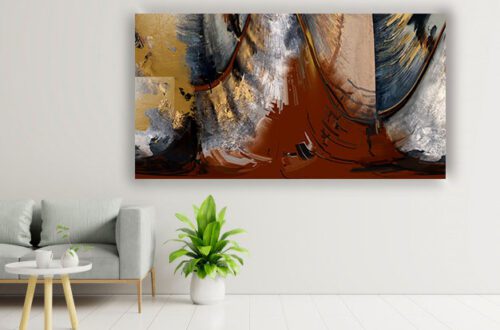Why are women artists undervalued as compared to men artists?
The undervaluation of women artists compared to their male counterparts can be attributed to a complex interplay of historical, social, and economic factors. Historically, the art world has been male-dominated, with women facing limited opportunities for education and exhibition. This has led to a scarcity of women artists in art history, influencing perceptions of artistic merit.
Social expectations and stereotypes about gender roles also contribute to the undervaluation of women’s art. Deep-seated beliefs about the nature of creativity and artistic genius, often associated with masculinity, can lead to unconscious biases favoring male artists. These biases may affect how critics, curators, and collectors assess and value artworks.
Economic factors play a role as well. The art market is driven by demand, and historical undervaluation can create a self-perpetuating cycle where women artists may have fewer opportunities to command high prices or gain prominence in major collections.
Efforts to address these issues involve promoting gender diversity in exhibitions, publications, and collections, as well as challenging traditional notions of artistic merit. Advocacy for equal opportunities, increased visibility for women artists, and a reevaluation of historical biases contribute to fostering a more inclusive and equitable art world.
Embracing the Game: My learning from the Artistic Journey of Van Gogh and Jackson Pollock.
In the realm of visual art, there exists a dichotomy between artists who meticulously plan
their creations and those who embrace the spontaneity of the process. On one side, there
are artists who work from reference images or live models, carefully plotting each
brushstroke with precision and intent. On the other side, there are artists who surrender
themselves to the canvas, allowing their intuition to guide their hand as they explore the
interplay of colours and shapes.
Vincent van Gogh and Jackson Pollock stand as prime examples of the latter category –
artists who relished in the act of creation, finding joy in the unpredictable journey of each
painting. For them, the canvas was not merely a surface to be adorned with images, but a
playground where they could freely express their emotions and ideas.
Van Gogh’s bold, swirling brushstrokes and vibrant palette captured the raw energy of his
surroundings, imbuing his landscapes and portraits with a sense of immediacy and emotion.
His famous quote, “I am seeking. I am striving. I am in it with all my heart,” encapsulates his
relentless pursuit of artistic expression, regardless of external recognition or acclaim.
Similarly, Jackson Pollock revolutionized the art world with his innovative drip painting
technique, which involved pouring and splattering paint onto canvases laid flat on the
ground. His seemingly chaotic compositions were a reflection of his inner turmoil and
experimentation, inviting viewers to explore the depths of their own subconscious.
Yet, despite their undeniable talent and dedication to their craft, both Van Gogh and Pollock
faced challenges in gaining recognition from the art establishment of their time. Their
unconventional methods and avant-garde approach often puzzled critics and patrons,
leading to feelings of frustration and alienation.
In today’s art world, where commercial success often dictates an artist’s worth, it can be
disheartening for those who choose to stray from the beaten path. The pressure to conform
to market trends and cater to the tastes of collectors can stifle creativity and undermine the
very essence of artistic expression.
For artists who find themselves caught in this struggle, it’s important to remember the words
of Van Gogh and Pollock – to approach art as a game, a playful exploration of possibilities
rather than a means to an end. Instead of seeking validation from external sources, embrace
the process of creation for its own sake, reveling in the freedom to express oneself without
constraints.
At its core, art is a deeply personal journey, one that transcends the boundaries of commerce
and recognition. Whether your work resonates with a wide audience or remains
misunderstood by the masses, take solace in the knowledge that true artistic fulfillment lies
in the act of creation itself.
So, to all the Van Goghs and Pollocks of the world, keep painting, keep experimenting, and
above all, keep enjoying the game of art. For in the end, it is the joy of creation that truly
matters, far more than any accolade or pay check could ever convey.
Written by,
Sabiha Hasan Sumbul
Artist Sabiha Hasan Sumbul views on Abstract art
Art is a vast realm where creativity knows no boundaries. It is a platform where artists can freely express their thoughts and emotions, capturing them within the confines of a canvas or any other medium they choose. The beauty of art lies in its subjective nature, and this is particularly evident in the realm of abstract art.
Abstract art is a unique form of artistic expression that challenges traditional notions of representation. Unlike realistic or figurative art, abstract art does not try to portray a recognizable object or convey a specific message. Instead, it invites the viewer to delve into the realm of imagination, to explore the depths of their own interpretation.
In abstract art, the artist guides us through a visual journey, using elements such as color, lines, and texture to evoke emotions and stimulate our senses. It is a language of its own, where the canvas becomes a playground for experimentation and innovation. Through this form of expression, artists can push the boundaries of what is conventional and explore new possibilities.
One of the fascinating aspects of abstract art is the way it bypasses our preconceived notions and forces us to challenge our understanding of the world. As humans, we tend to associate objects with familiar shapes and forms that we have stored in our memory. However, when confronted with a non-representational piece of art, we find ourselves in uncharted territory. Our minds grapple with the unfamiliar, trying to make sense of something that cannot be easily categorized or defined.
This is where the true power of abstract art lies. It has the ability to transport us to a world beyond reality, a realm where imagination reigns supreme. The artist’s brush strokes become a window into their innermost thoughts and emotions, inviting us to join them on an introspective journey.
Abstract art is not merely a visual stimulus; it is an experience. It allows us to explore our own emotions and thoughts, offering a mirror through which we can reflect upon our own experiences. Each viewer brings their own unique perspective to the artwork, interpreting it in a way that resonates with their own personal narrative.Critics of abstract art may argue that it lacks a clear message or purpose. However, that is precisely the allure of this artistic form – its ambiguity and versatility. Abstract art does not dictate what we should see or feel; it encourages us to let go of our inhibitions and embrace the unknown. It challenges us to think outside the box and explore the depths of our own imagination.
In conclusion, abstract art is a testament to the boundless creativity and freedom of expression that art offers. It transcends the limitations of representation, inviting us to delve into the realm of the unknown and embrace the beauty of ambiguity. It is a language of emotions, a visual symphony that allows us to explore the depths of our own consciousness. So let us embrace abstract art with an open mind, for within its enigmatic brushstrokes lies a world waiting to be discovered.
Books Recommend for Abstract paintings
Abstract Painting: Concepts and Techniques” by Vicky Perry: This book provides a comprehensive guide to abstract painting techniques, exploring color, texture, composition, and various methods of creating abstract art.
“Ways of Seeing” by John Berger: While not solely focused on abstract art, this classic book offers insightful perspectives on how we view art, which can be highly relevant and thought-provoking for anyone exploring abstract painting.
“Abstract Art: A Global History” by Pepe Karmel: This book provides an extensive overview of abstract art’s evolution, covering major movements, key artists, and the cultural contexts that influenced its development.
“Abstract Painting: The Elements of Visual Language” by Jane Davies: It’s a practical guide to abstract painting, exploring foundational elements like color, line, shape, texture, and composition in detail.
“The Art of Abstract Painting” by Rolina van Vliet: This book offers a hands-on approach to abstract painting, focusing on techniques, experimentation, and developing one’s personal style.
“Abstract Explorations in Acrylic Painting” by Jo Toye: Specifically catering to acrylic painters, this book explores various techniques and methods for creating abstract art using acrylics.
“Theories and Documents of Contemporary Art: A Sourcebook of Artists’ Writings” edited by Kristine Stiles and Peter Selz: While broader in scope, this compilation includes writings by abstract artists and theorists, offering insights into their thoughts and philosophies.
These books cover a range of perspectives, techniques, and historical contexts surrounding abstract painting. Depending on your interests—be it practical techniques, historical context, or theoretical aspects—these resources can be excellent companions for anyone exploring or practicing abstract painting.
Filtering Out Negativity
“I first came across Sabiha’s work when I saw the painting titled “Filtering Out Negativity” from the collection of contributions to the RBTC art exhibition (Women Depicting Women). I was simply overwhelmed by her ability to translate raw emotion and energy onto canvas, creating whole realms of color and texture that strike a nerve deep within our own psyches. She is the artist of choice for many leading international architects and interior designers, as her paintings fit just as well in very simple, contemporary interiors as they do in opulent ones. The stunning simplicity with which the artist has painted the inner needs of women in today’s tumultuous world tickles the senses. When you set your eyes upon this work, you feel a healing effect. I am sure this work will inspire many women to filter negativity from their lives and heighten the desire for a healthier and happier life.” Kudos to Sabiha Hasan Sumbul.
Sheeba Hamid
Tourism Professor, Department of Commerce, Aligarh Muslim University,
India Joint Secretary of National Executive Committee of Indian Tourism and Hospitality Congress
Painting For Hotel Wall

Suite Room Painting As Per Interior
While searching for paintings to redesign our hotel ‘The Bizton’ came across ‘SHSWorks – The Art Gallery’. We sourced artworks for our suite rooms, hotel corridors & lobby and got both variety & value from them. We also procured multiple customized artworks in desired theme & sizes from them sometime later. The best part is that the senior artist Ms. Sabiha Hasan Sumbul coordinated with us right from the start. Today SHSWorks has become our ‘One-Stop-Shop’ for all our décor needs.
Mr. Arun A Gaur
Hotelier – Vijaya Homes Group
Mr. Sandeep Patial (Group General Manager) Meraden Group of Hotels

We have been buying paintings from SHSWorks for our home & office. They are thorough professionals even when it comes to a large number of painting demands. We have got our Goa Hotel ‘Meraden La Oasis’ renovated & were banking on SHSWorks for over 100+ framed paintings to be commissioned in this property. Happy to have all artworks delivered timely with high-quality prints & frames. We have tide-up with them for all our future needs.
